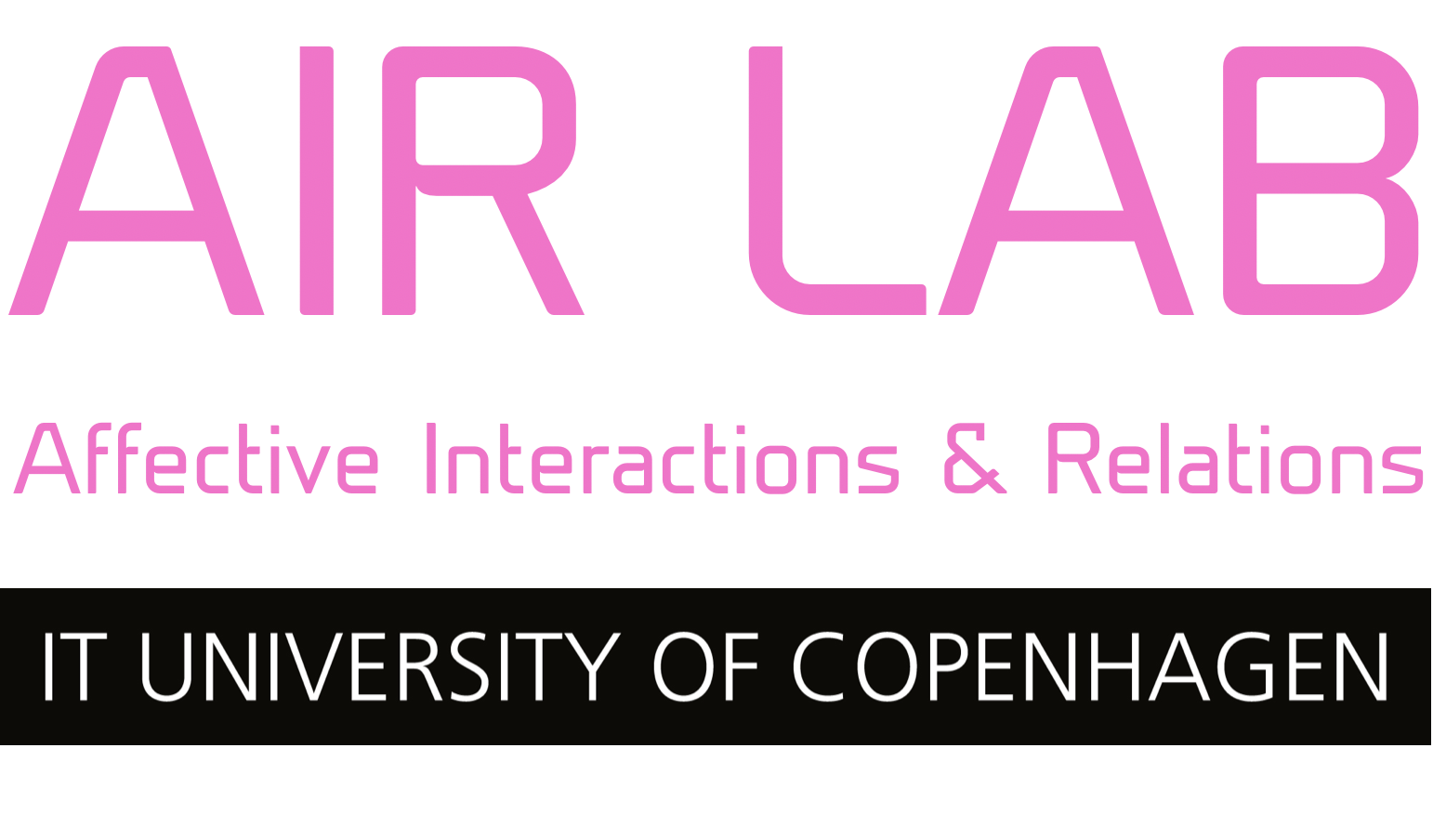We situated a specific interaction expressed by our main topic being the ripeness and decay of food. The design context was inspired by our audience being visually impaired.
Our prototype illustrates how visually impaired people inspired us to work with touch and feel which became the foundation for the prototype. We wanted to seek a deeper understanding on how to conduct research through design by working with senses in relation to our audience and topic.
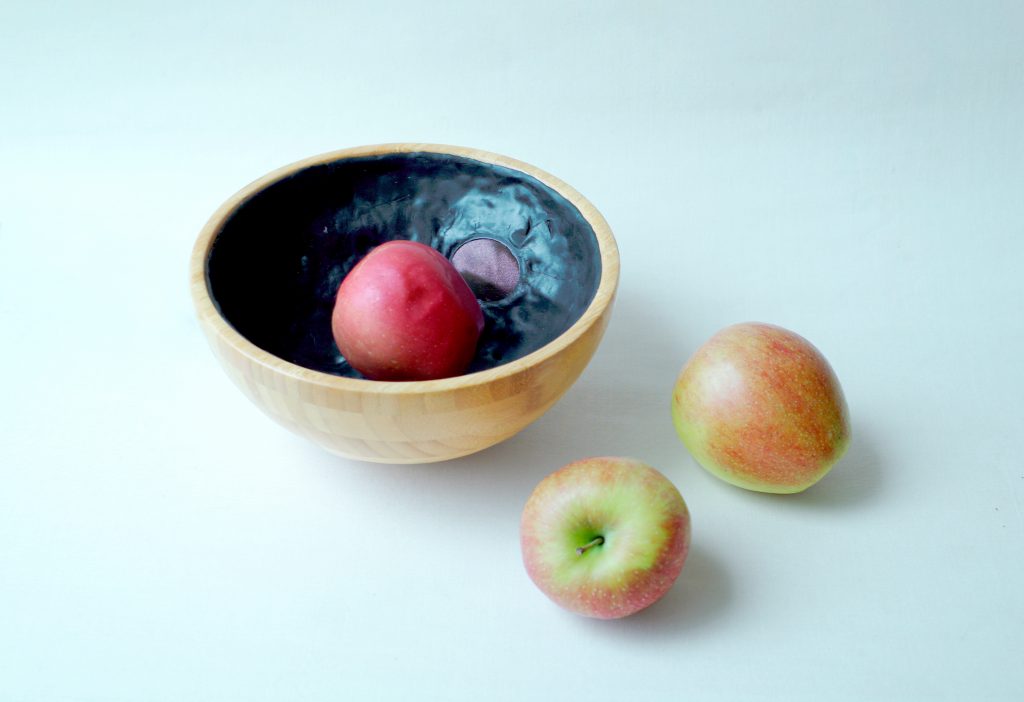
DESIGN BRIEF
Design a way to subjectivly experience the ripeness of a fruit through touch and feel and allow the users to reflect upon the interaction.
DESIGN CONCEPT
Create a fruit bowl which allows the user to assess and experience the ripeness of a fruit, by attributing the fruit different stages of liveliness.
DESIGN PROPOSAL
With high finish and fidelity, the focus revolves around the interaction and the experience itself. By resembling an everyday object, it only draws your attention when you approach it. The bowl acts as mediator, creating an intimate experience between user and fruit, making it possible for the user to assess different stages of liveliness.
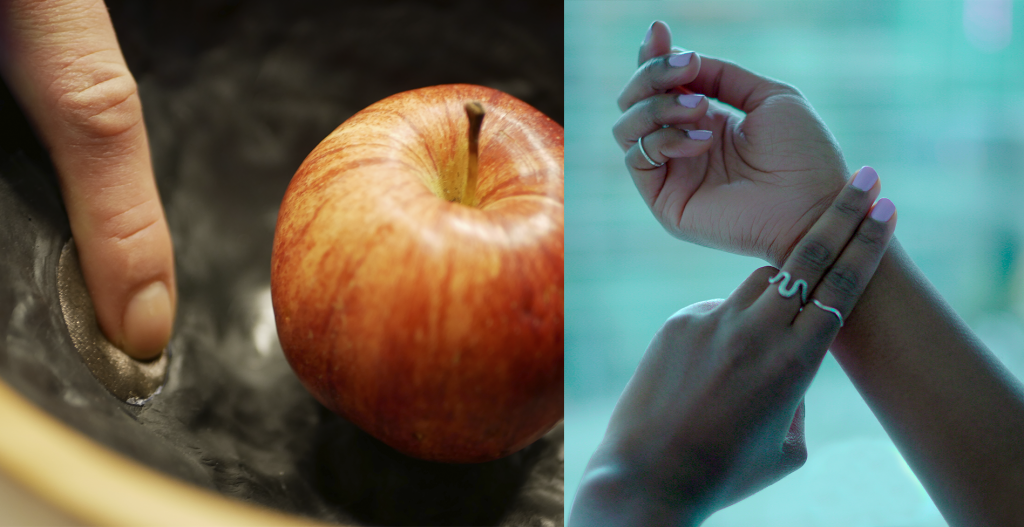
The Pulsating Fruit Bowl mediates communication between the user and their fruit and explores the relationship between the two. By using a pulsating movement, the bowl communicates different stages of ripeness. This allowed the user to feel the information given instead of seeing it. The interactive fruit bowl consists of two main parts: the bowl itself and the external electronics board. In the bottom of the wooden bowl are two nails which are mounted in a 3D-printed housing. The two nails are connected separately to the external electronics board. When fruit is placed on the nails, it completes a circuit which measures the resistance though the fruit, which is depending on the individual water content of the fruit.
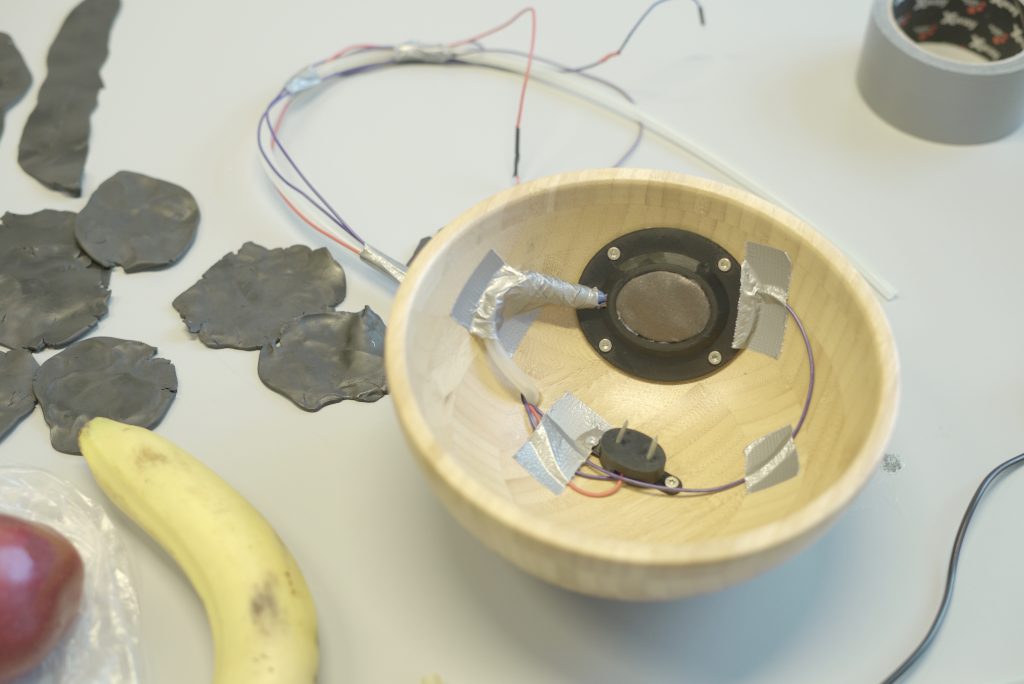
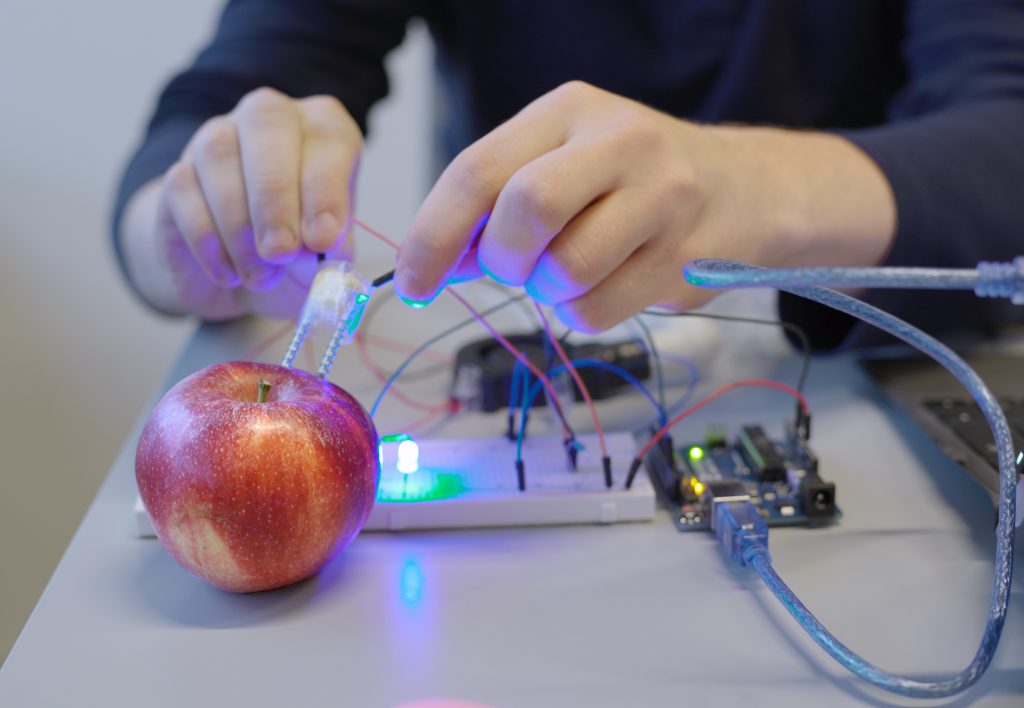
When the circuit is completed, it enables the capacitive sensor which is connected to the electrically conductive fabric stretched across the balloon. The balloon is likewise mounted in a 3D printed housing and connected to the electronics board, using an air tube and wires. When the fabric is touched the air pump, located on the electronics board, activates and in combination with the air valve opening (when the pump is off) and closing (when the pump in on) directs air in and out of the balloon, alternately inflating and deflating the balloon, resulting in a pulsating movement. 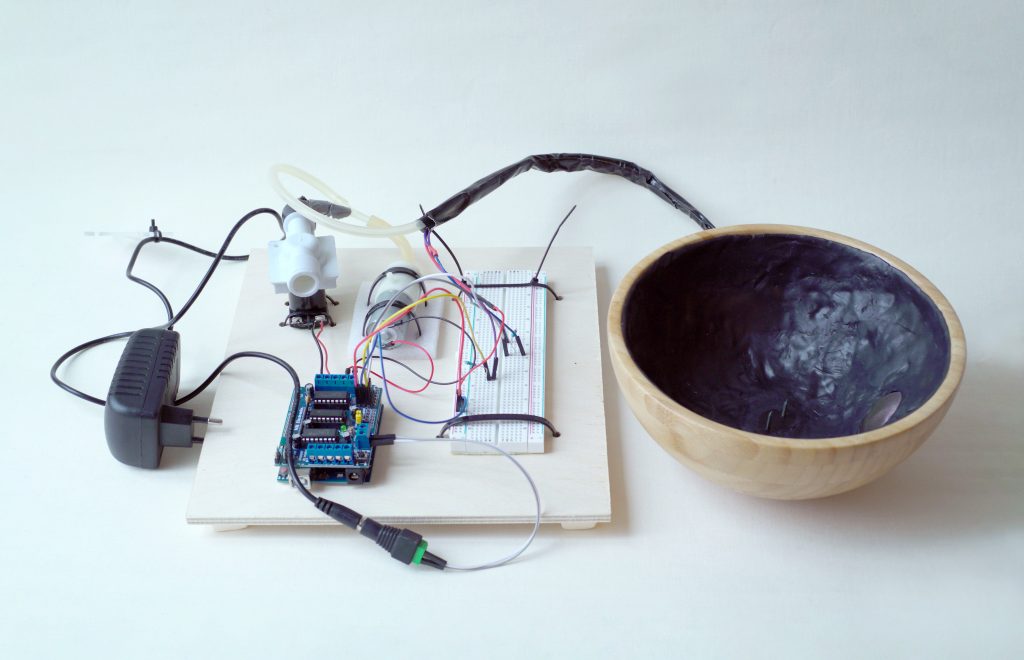

PROJECT MEMBERS
Andreas Oemann, Bateta Annet Kainamura, Christian Toft & Marie Asminn
